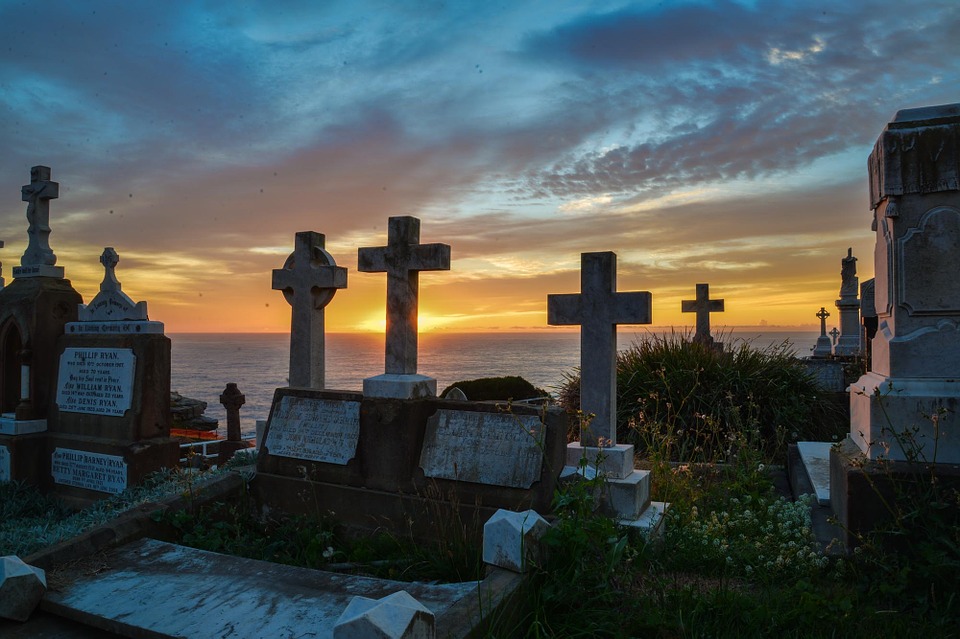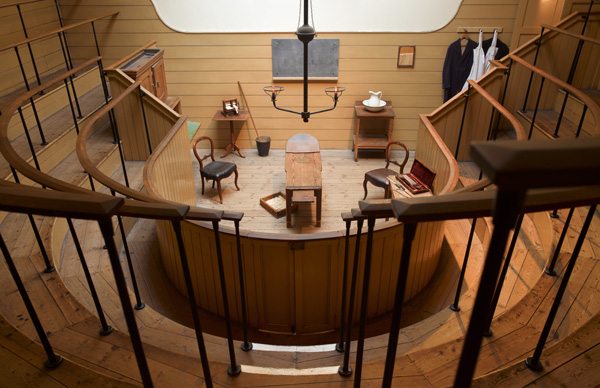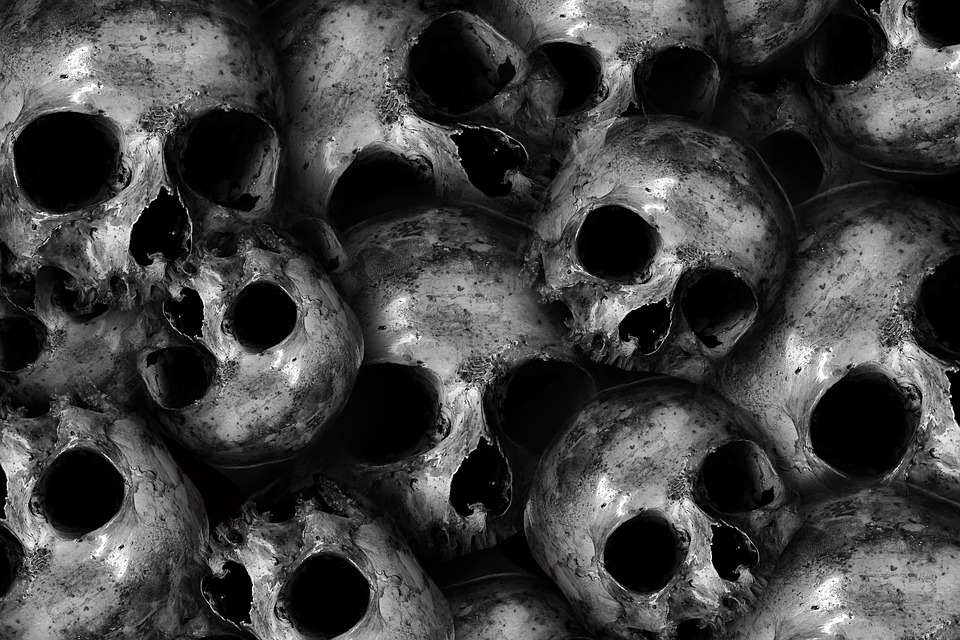Lindsey Fitzharris- The Butchering Art
The trailer for The Butchering Art is a grim and gripping watch. High production values too. What made you add a short movie into the mix of a book launch?
I approached my friend Alex Anstey, who is an incredibly talented moviemaker, with the idea of filming a dramatic reconstruction of a pre-anaesthetic operation with a young Joseph Lister attending. We shot most of the book trailer at the Old Operating Theatre in London - the second oldest in the world. I’m a highly visual person (as you can probably tell from my IG and Twitter accounts!). I also write in a very visceral way. I thought it would be fun for readers to see a small part of the story come to life on screen. I hope that I can get the feature film made someday - I’m working hard to make that dream come true.
You have an obvious relish for the grotesque and gory, when did that first emerge and what did your parents make of it?
I was a strange child and I grew up to be an even stranger adult. I used to drag my grandmother from cemetery to cemetery hunting “ghosts.” I suppose people might think that I was always obsessed with death. But actually, I was always fascinated with the past, and those who lived in it. That said, it wasn’t all about a love of history. I grew up on a steadfast diet of Stephen King, and I was definitely the kid who relished scaring the others on the playground! I still do.

You vividly portray the world of Victorian surgery before antiseptics and prior to antibiotics. How do you feel about today’s antimicrobial resistance (AMR) crisis that potentially echoes this period, but with less butchery and bushy moustaches?
It’s hard for me to imagine anything without the butchery and busy moustaches! Jokes aside, you are absolutely right that we are facing a crisis in medicine with the growing resistance to antibiotics. When Joseph Lister developed antiseptic techniques, he faced challenges from doctors who simply could not or would not believe that germs existed. It was very difficult for them to understand that these invisible little creatures were killing their patients - and that they, themselves, had exacerbated mortality rates by not washing their hands or their instruments between operations.
Thankfully, this is not a problem for us in the 21st century as we wholeheartedly accept germ theory, and take measures to sterilize our operating theaters. But with growing antimicrobial resistance, I fear that hospitals will once again become dangerous places, and we will see a spike in mortality rates inside these institutes.
You love the Clockwork Saw and say that there’s much to learn from (sometimes fatal) failures. What’s been your most informative mistake?
Failure is incredible important, especially when you’re talking about the history of science and medicine. How many things failed before they succeeded? And how did those failures inform success? The clockwork saw is a great example. It was invented by W. H. B. Winchester in the 19th century. It was a circular saw with a crank, and when wound, it was meant to spin continuously, in the way an automatic electric saw might do today.
The only problem was that the instrument was incredibly unruly and difficult to control. The first and only time Winchester used it, he accidentally took off his assistant’s fingers! It never made it out of protocol stage, so there is only one in existence, and that is currently housed at the Hunterian Museum at the Royal College of Surgeons in London.
I’ve suffered many personal setbacks in my own life. Probably the most traumatic happened in 2015, when my (now ex) husband abruptly ended our ten year relationship. He completely disappeared, and I was left facing deportation from the U.K. as a result. I had no job, no income of my own, and no ability to work since the Home Office had confiscated my passport while my immigration situation was pending. It was then that I decided to sit down and write a proposal for a book. Thus, The Butchering Art was born.

Many of our members and readers have medical experience in their work or research but may be mystified by a ‘medical historian’ and the bones of that role. How would you put them out of their misery?
Like most medical doctors, historians have specialties. I happen to have a PhD in the History of Science & Medicine from the University of Oxford. These days, however, I call myself a storyteller first and foremost, as I’m a freelance writer and am no longer part of academia.
You relish the macabre and gruesome, how would you explain this interest, when some people faint at the sight of a syringe or the mere glimpse of blood?
I’ve had several people faint during my book talk. It could be down to the gory visuals that I incorporate in the lecture. But I also have a sneaky suspicion that people don’t eat before they come to an event that they fear might be a bit disturbing - and it has more to do with their blood sugar levels than my visceral descriptions of Victorian operations!
Your presentation of history is both factually correct but happily gruesome, do you only educate us dark-minded adults?
I’m proud of the fact that my work appeals to people of all ages. I think parents are more concerned about the affect my work might have on their children than the children are themselves! I have a lot of young viewers who visit my YouTube channel, Under The Knife. I also speak at schools occasionally, or at literary festivals aimed at younger participants. Last year, I spoke at the Chalke Valley Festival to children aged 14-17. I sold more books to those kids than I did the adult audience who followed, which tells you a lot about the potential appetite for medical history amongst young readers.
Perhaps unsurprisingly, you are in the Order of the Good Death - what drew you to that and why do you think we (society) are less cosy with The End than we used to be?
Caitlin Doughty, the mortician who heads The Order of the Good Death, approached me several years back and asked me to be a part of the “death positive movement." The aim of the organization is to open up conversations about death and dying - and I suppose Caitlin felt I could add historical context to some of the important subjects they explore at their events, and on their blog.
We as a society are less comfortable with death than our ancestors, who experienced it more frequently in an age before antibiotics or vaccinations. People in the past often died at home, and were washed and dressed by family members before burial. In contrast, death has been medicalized and sanitized in the 21st-century, and this means fewer and fewer of us are comfortable around it. The Order of the Good Death helps facilitate important conversations around end of life care, and the many options available to us after we die (i.e. cremation, natural burial, body donation, etc).

You’re currently working on a book about another pioneering surgeon, Harold Gillies, is it a more emotional piece of work due to the closeness in history and the traumas of war?
My next book will be on the birth of plastic surgery told through the incredible story of Harold Gillies, the pioneering surgeon who first united art & medicine to address the horrific facial injuries that resulted from World War I. From the moment that the “Dhak! Dhak! Dhak! Dhak!” of the first machine gun rang out over the Western Front, one thing was clear: mankind’s military technology wildly outpaced its medical capabilities. Noses were blown off, jaws were shattered, tongues were torn out, and eyeballs went missing. In some cases, entire faces were obliterated.
It's a very different story to the one that I told in The Butchering Art. Many soldiers were shot in the face simply because they seemed to think they could pop their heads up over the parapet and move quickly enough to dodge the hail of machine-gun bullets. It’s emotionally draining to go through these patient files. I find the research distressing, but I feel passionately that these are stories that should be heard. There has already been some excellent work done by scholars on this subject, and I hope I can make a small contribution to the existing literature with my own book - which will be aimed (as always) at a more general readership.
What do you feel was Gillies greatest contribution to medicine?
I’m still in the early stages of my research so it’s difficult to say right now, but his multi-displinary approach to facial reconstruction was truly ground-breaking. He created an army of dentists, surgeons, anesthetists, radiologists, photographers, and artists when addressing the horrific injuries resulting from WWI. This is truly an epic story about our desire and drive to overcome great tragedy.
Bodysnatchers and resurrections get a bad rap and are viewed as pretty low on the criminal food-chain- what do you admire about them so much? Apparently, if there was a time machine, you’d like to join them on a mission…
You have certainly done your research on me! A few years back, I joked that if I could go back in time, it would be fun to accompany a gang of resurrectionists on their nightly hunt for bodies - mostly so I could better understand how they operated since, unsurprisingly, there isn’t a lot of documentation on their criminal activities.
It’s not so much that I admire bodysnatchers as I think that they were a necessary evil to the medical community. Without bodies to dissect, medicine would not have been able to progress as much as it did in the early 19th century. I think their contribution should be acknowledged rather than shunned and swept under the rug. I bet they were a fun bunch, too!
Stewart Cumiskey
The Butchering Art: Joseph Lister's Quest to Transform the Grisly World of Victorian Medicine by Lindsey Fitzharris is published by Allen Lane.
